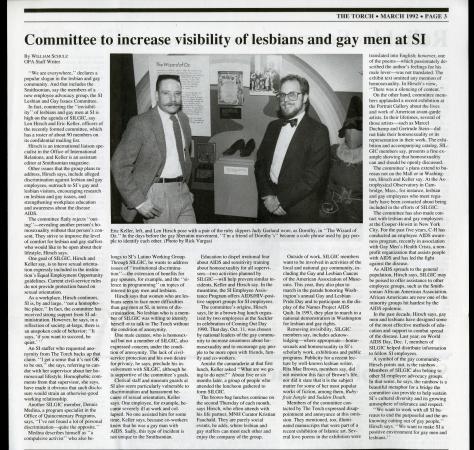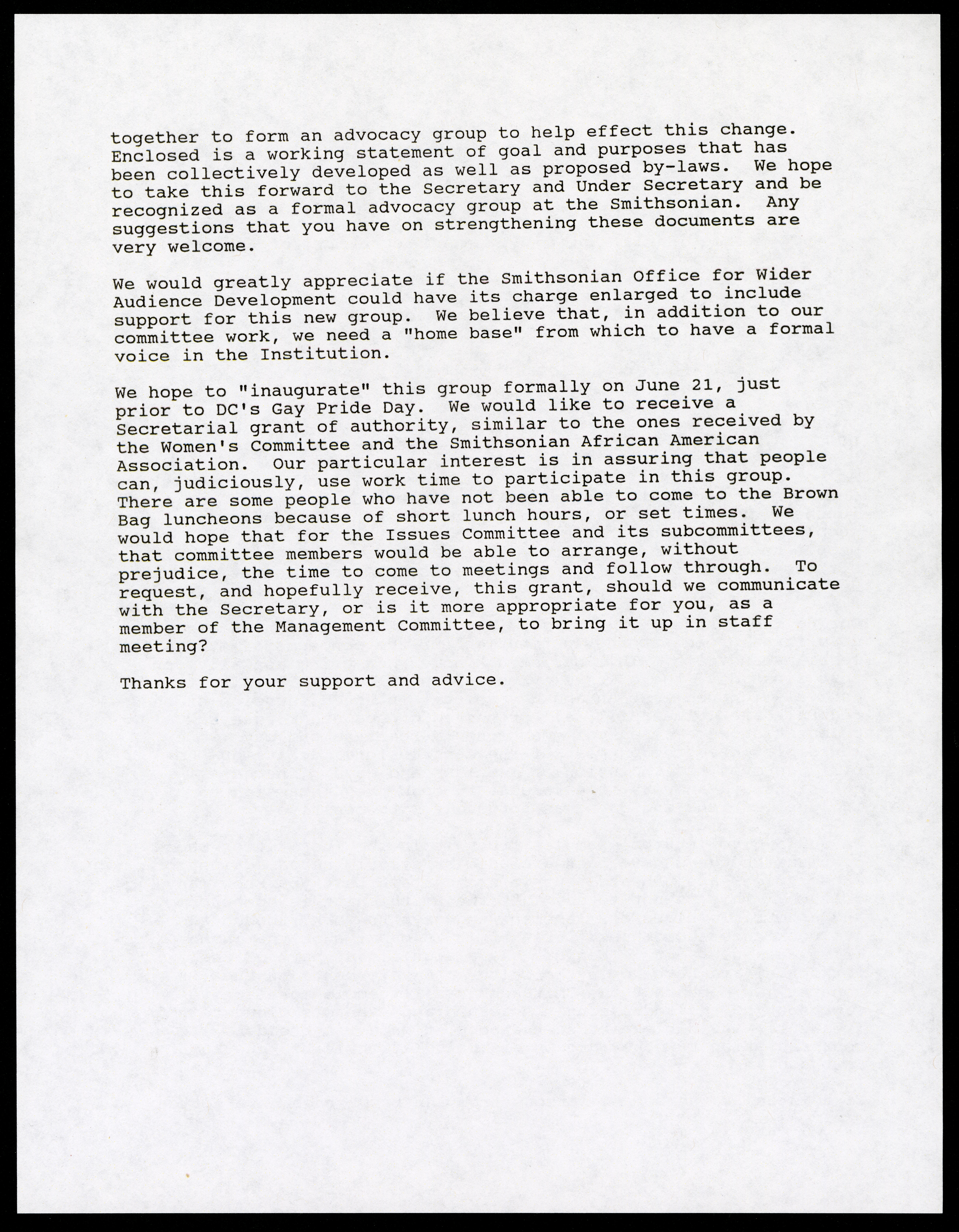On July 6, 1996, Leonard “Len” Hirsch sat down in the Smithsonian Memories booth, a tent devoted to capturing the history and memories of Smithsonian staff, volunteers, and visitors, at the Smithsonian Folklife Festival. That day, Hirsch decided to share his experiences with the Smithsonian, including how he came to work here, adventures on the job, and his recollection of the Federal GLOBE—the Gay, Lesbian, Bisexual, and Transgender employee advocacy group for the federal government.

Founding president of Federal GLOBE, Hirsch established Smithsonian’s chapter soon after he joined the Institution in 1988 as a liaison in the Office of International Relations. In his recollections, Hirsch specifically addressed the Smithsonian’s silence on the queer community:
We are truly invisible unless we force it onto the public programming exhibits space for a number of reasons. One, is that there isn’t even a category in the collecting or in the archives for lesbian and gay. So, if it is there, no one even knows how to find it.
Today collecting practices and exhibit spaces are more reflective and inclusive of the queer communities’ experiences and contributions. Yet, Hirsch, in 1996, articulated a point correcting the silences on queer life that museums, archives, and cultural institutions are still working to reconcile.
To celebrate Pride in June 2017, we highlighted the history of the Smithsonian GLOBE and one of the founding documents from the Smithsonian Lesbian and Gay Issues Committee (SLGIC). This year, we’re highlighting the accompanying memo which sought formal recognition from the Smithsonian for SLGIC to operate and advocate effectively for LGBTQ+ employees at the Institution. Leonard Hirsch and Eric Keller, as representatives of SLGIC, attached the memo to the group’s founding guidelines challenging the Smithsonian to formally recognize the formation of the Smithsonian Lesbian and Gay Issues Committee.
In the memo dated June 3, 1991, they wrote that this request
is not to say that the Smithsonian is homophobic and a horrible place for lesbians and gays to work (though there are pockets of homophobia), rather it is passive on the issue. If we are quiet, it is benign. As a significant part of the workforce, and a voice in the cultural developments in the country, we hope the Smithsonian will become more active in representing and addressing the issues and events salient to this frequently invisible part of the population as it broadens its representation to other groups historically invisible at the Smithsonian.
In seeking recognition, they asked “to have a formal voice in the Institution”—a formal, visible, and active voice. This formal advocacy voice at the Smithsonian is now known at the Smithsonian Pride Alliance, formerly Smithsonian GLOBE, founded at the height of the AIDS crisis. The utter devastation of HIV/AIDS and the failure of federal, state, and local governments to meet the needs of communities in crisis necessitated grassroots community organizing. LGBTQ+ communities and their allies organized to advocate not only around HIV/AIDS, but also for issues of discrimation and oppression surrounding queer life. The importance of advocating for all aspects of queer life is evident in this memo. This group was advocating for their own visibility by asking that the Smithsonian be “active in representing and addressing the issues and events salient to this frequently invisible part of the population.” This lineage of activism, advocacy, and representation continues today in the work of the Smithsonian Pride Alliance.
Related Resources
- “Spinsters, Confirmed Bachelors, and LGBTQ Collecting,” by Katherine Ott, O Say Can You See?, Smithsonian’s National Museum of American History
- “Smithsonian GLOBE: A History,” by John Coppola, The Bigger Picture, Smithsonian Institution Archives
Produced by the Smithsonian Institution Archives. For copyright questions, please see the Terms of Use.



Leave a Comment